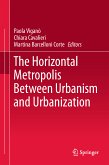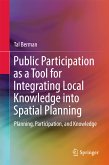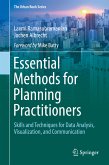Borders in Central Europe After the Schengen Agreement (eBook, PDF)
Redaktion: Havlícek, Tomás; Dokoupil, Jaroslav; Jerábek, Milan
72,95 €
72,95 €
inkl. MwSt.
Sofort per Download lieferbar

36 °P sammeln
72,95 €
Als Download kaufen

72,95 €
inkl. MwSt.
Sofort per Download lieferbar

36 °P sammeln
Jetzt verschenken
Alle Infos zum eBook verschenken
72,95 €
inkl. MwSt.
Sofort per Download lieferbar
Alle Infos zum eBook verschenken

36 °P sammeln
Borders in Central Europe After the Schengen Agreement (eBook, PDF)
Redaktion: Havlícek, Tomás; Dokoupil, Jaroslav; Jerábek, Milan
- Format: PDF
- Merkliste
- Auf die Merkliste
- Bewerten Bewerten
- Teilen
- Produkt teilen
- Produkterinnerung
- Produkterinnerung

Bitte loggen Sie sich zunächst in Ihr Kundenkonto ein oder registrieren Sie sich bei
bücher.de, um das eBook-Abo tolino select nutzen zu können.
Hier können Sie sich einloggen
Hier können Sie sich einloggen
Sie sind bereits eingeloggt. Klicken Sie auf 2. tolino select Abo, um fortzufahren.

Bitte loggen Sie sich zunächst in Ihr Kundenkonto ein oder registrieren Sie sich bei bücher.de, um das eBook-Abo tolino select nutzen zu können.
Offers new conceptual features to the border regions within the Schengen countries
Unique methodology (questionnaires) offer insight into the role of Schengen in Central Europe
Compares the of results by many border regions in Central Europe
- Geräte: PC
- ohne Kopierschutz
- eBook Hilfe
- Größe: 4.85MB
Andere Kunden interessierten sich auch für
![The Horizontal Metropolis Between Urbanism and Urbanization (eBook, PDF) The Horizontal Metropolis Between Urbanism and Urbanization (eBook, PDF)]() The Horizontal Metropolis Between Urbanism and Urbanization (eBook, PDF)216,95 €
The Horizontal Metropolis Between Urbanism and Urbanization (eBook, PDF)216,95 €![Public Participation as a Tool for Integrating Local Knowledge into Spatial Planning (eBook, PDF) Public Participation as a Tool for Integrating Local Knowledge into Spatial Planning (eBook, PDF)]() Tal BermanPublic Participation as a Tool for Integrating Local Knowledge into Spatial Planning (eBook, PDF)40,95 €
Tal BermanPublic Participation as a Tool for Integrating Local Knowledge into Spatial Planning (eBook, PDF)40,95 €![Depopulation, Deindustrialisation and Disasters (eBook, PDF) Depopulation, Deindustrialisation and Disasters (eBook, PDF)]() Depopulation, Deindustrialisation and Disasters (eBook, PDF)88,95 €
Depopulation, Deindustrialisation and Disasters (eBook, PDF)88,95 €![Emerging Urban Spaces (eBook, PDF) Emerging Urban Spaces (eBook, PDF)]() Emerging Urban Spaces (eBook, PDF)72,95 €
Emerging Urban Spaces (eBook, PDF)72,95 €![Essential Methods for Planning Practitioners (eBook, PDF) Essential Methods for Planning Practitioners (eBook, PDF)]() Laxmi RamasubramanianEssential Methods for Planning Practitioners (eBook, PDF)88,95 €
Laxmi RamasubramanianEssential Methods for Planning Practitioners (eBook, PDF)88,95 €![Relational Planning (eBook, PDF) Relational Planning (eBook, PDF)]() Relational Planning (eBook, PDF)72,95 €
Relational Planning (eBook, PDF)72,95 €![Modernity, Nation and Urban-Architectural Form (eBook, PDF) Modernity, Nation and Urban-Architectural Form (eBook, PDF)]() Modernity, Nation and Urban-Architectural Form (eBook, PDF)72,95 €
Modernity, Nation and Urban-Architectural Form (eBook, PDF)72,95 €-
-
-
Offers new conceptual features to the border regions within the Schengen countries
Unique methodology (questionnaires) offer insight into the role of Schengen in Central Europe
Compares the of results by many border regions in Central Europe
Unique methodology (questionnaires) offer insight into the role of Schengen in Central Europe
Compares the of results by many border regions in Central Europe
Dieser Download kann aus rechtlichen Gründen nur mit Rechnungsadresse in A, B, BG, CY, CZ, D, DK, EW, E, FIN, F, GR, HR, H, IRL, I, LT, L, LR, M, NL, PL, P, R, S, SLO, SK ausgeliefert werden.
Produktdetails
- Produktdetails
- Verlag: Springer International Publishing
- Seitenzahl: 239
- Erscheinungstermin: 15. September 2017
- Englisch
- ISBN-13: 9783319630168
- Artikelnr.: 52941980
- Verlag: Springer International Publishing
- Seitenzahl: 239
- Erscheinungstermin: 15. September 2017
- Englisch
- ISBN-13: 9783319630168
- Artikelnr.: 52941980
- Herstellerkennzeichnung Die Herstellerinformationen sind derzeit nicht verfügbar.
Tomá Havlí¿ek is Assistant Professor at the Department of Social Geography and Regional Development, Faculty of Science at the Charles University in Prague, Czechia. His research is concerned with the geography of border and peripheral regions, geography of religion and cultural geography. He is member of the main committee of Czech Geographic Society. He is also collaborator of the workgroup on geography of religion by the German Geographical Society. He is interested also in border areas in Europe and in particular the Czech-Austrian borderland. He has published many articles concerning cross-border cooperation in Central Europe. Milan Je¿ábek is Associated Professor at the Department of Geography at the Masaryk University in Brno, Czechia. The scope of his research lies in Geography of Population and Settlement, Regional Planning, Regional Development and policy, especially Geography of Border Studies. He has led many projects dealing with the study of border and cross-border cooperation. He is also a member of the editorial board of the book series "Geographica" published by the Czech Geographic Society and a co-chair of professional working group for regional development of the Elbe/Labe Euroregion. Jaroslav Dokoupil is Associated Professor at the Department of Geography at the Faculty of Economics at the University of West Bohemia in Plze¿. He is a member of the Centre for Regional Development Research. He deals with regional geography and regional planning. In terms of his research activities, he focuses on the borderland of Czechia, specifically on the Czech-Bavarian borderland and on peripheral areas and Euroregions in the context of European regional policy.
Introduction (Milan Jerábek).- Part I: European Integration, Borderlands and Schengen.- Chapter 1. Changing European Union: the Schengen Agreement (Petr Dostal).- Chapter 2. The Development of Borderlands as a Part of European Process of Integration (Jaroslav Dokoupil).- Chapter 3. Phenomenon of Schengen - Fact or Fiction? (Tomás Havlícek).- Chapter 4. Euroregions as a Platform for Cross-Border Cooperation (Milan Jerábek).- Chapter 5. Institutionalisation of Cross-Border Cooperation: the Role of the Association of European Border regions (Martín Guillermo Ramirez).- Part II: Case Studies - Internal and External Schengen Borders.- Chapter 6. The Example of Swiss Borderland with a Focus on Euregio Basiliensis/Tri Rhena (DE/FR/CH) (Walter Leimgruber).- Chapter 7. Development of the Slovak Borderlands with an Emphasis on the Situation after Schengen: internal and external borders (Marian Halás).- Chapter 8. Eastern Borderland of the Baltic States as the External
Border of Schengen (Josef Miskovsk).- Chapter 9. Silesian Identity across the Internal Borders of the EU (Tadeusz Siwek).- Part III: Research in the Model Euroregions on the Czech Borderlands.- Chapter 10. The Quality of Life and Cross-Border Relation in Selected Czech Euroregions (Alena Matusková).- Chapter 11. The Building of Cross-Border Region Using the Example Euroregion Silva Nortica - on the Way from Closed to Open Borders (Tomás Havlícek).- Chapter 12. Cross-Border Community Expression of Open Civil Society on the Example of the Euroregion Elbe/Labe (Frantisek Zich ).- Chapter 13. Conclusions: The borderlands after Schengen - self-sufficient, oscillatory and/or transit regions? (Milan Jerábek).
Border of Schengen (Josef Miskovsk).- Chapter 9. Silesian Identity across the Internal Borders of the EU (Tadeusz Siwek).- Part III: Research in the Model Euroregions on the Czech Borderlands.- Chapter 10. The Quality of Life and Cross-Border Relation in Selected Czech Euroregions (Alena Matusková).- Chapter 11. The Building of Cross-Border Region Using the Example Euroregion Silva Nortica - on the Way from Closed to Open Borders (Tomás Havlícek).- Chapter 12. Cross-Border Community Expression of Open Civil Society on the Example of the Euroregion Elbe/Labe (Frantisek Zich ).- Chapter 13. Conclusions: The borderlands after Schengen - self-sufficient, oscillatory and/or transit regions? (Milan Jerábek).
Introduction (Milan Jerábek).- Part I: European Integration, Borderlands and Schengen.- Chapter 1. Changing European Union: the Schengen Agreement (Petr Dostal).- Chapter 2. The Development of Borderlands as a Part of European Process of Integration (Jaroslav Dokoupil).- Chapter 3. Phenomenon of Schengen - Fact or Fiction? (Tomás Havlícek).- Chapter 4. Euroregions as a Platform for Cross-Border Cooperation (Milan Jerábek).- Chapter 5. Institutionalisation of Cross-Border Cooperation: the Role of the Association of European Border regions (Martín Guillermo Ramirez).- Part II: Case Studies - Internal and External Schengen Borders.- Chapter 6. The Example of Swiss Borderland with a Focus on Euregio Basiliensis/Tri Rhena (DE/FR/CH) (Walter Leimgruber).- Chapter 7. Development of the Slovak Borderlands with an Emphasis on the Situation after Schengen: internal and external borders (Marian Halás).- Chapter 8. Eastern Borderland of the Baltic States as the External
Border of Schengen (Josef Miskovsk).- Chapter 9. Silesian Identity across the Internal Borders of the EU (Tadeusz Siwek).- Part III: Research in the Model Euroregions on the Czech Borderlands.- Chapter 10. The Quality of Life and Cross-Border Relation in Selected Czech Euroregions (Alena Matusková).- Chapter 11. The Building of Cross-Border Region Using the Example Euroregion Silva Nortica - on the Way from Closed to Open Borders (Tomás Havlícek).- Chapter 12. Cross-Border Community Expression of Open Civil Society on the Example of the Euroregion Elbe/Labe (Frantisek Zich ).- Chapter 13. Conclusions: The borderlands after Schengen - self-sufficient, oscillatory and/or transit regions? (Milan Jerábek).
Border of Schengen (Josef Miskovsk).- Chapter 9. Silesian Identity across the Internal Borders of the EU (Tadeusz Siwek).- Part III: Research in the Model Euroregions on the Czech Borderlands.- Chapter 10. The Quality of Life and Cross-Border Relation in Selected Czech Euroregions (Alena Matusková).- Chapter 11. The Building of Cross-Border Region Using the Example Euroregion Silva Nortica - on the Way from Closed to Open Borders (Tomás Havlícek).- Chapter 12. Cross-Border Community Expression of Open Civil Society on the Example of the Euroregion Elbe/Labe (Frantisek Zich ).- Chapter 13. Conclusions: The borderlands after Schengen - self-sufficient, oscillatory and/or transit regions? (Milan Jerábek).







